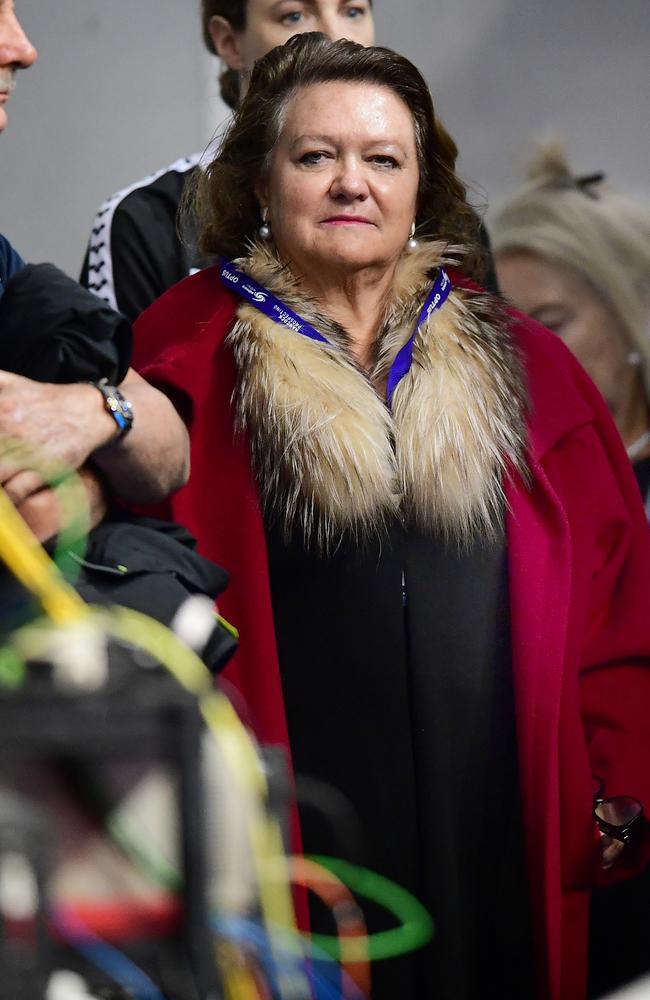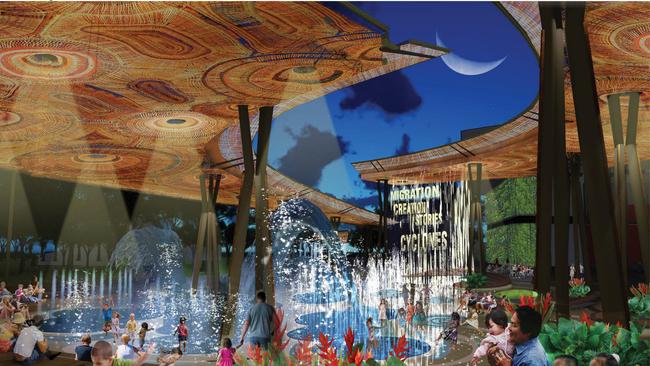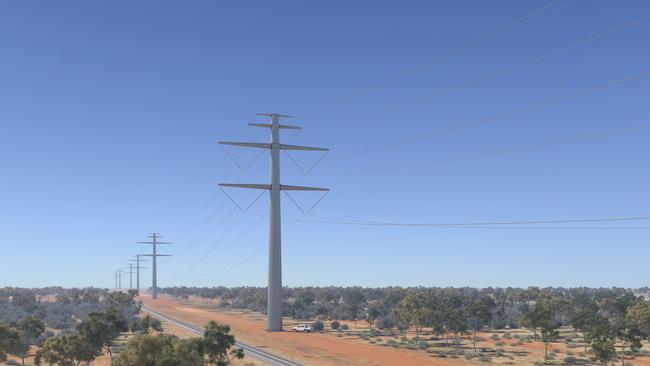The major projects changing the face of the NT
Inpex showed the transformative power of major projects in the Northern Territory. Here are some of the proposals that will, or are, bringing change.

Business
Don't miss out on the headlines from Business. Followed categories will be added to My News.
The biggest challenge towards achieving a $40bn economy by 2030 is growing the population to deliver the projects to reach that target.
One way to do this is to make the Territory move liveable and attractive for relocation. Another is to deliver major projects that will attract a workforce, many of whom may settle permanently in the Territory.
Here are some of the transformative projects that could drive change for the better in the Territory:
ARAFURA RARE EARTHS LIMITED
There are high hopes Arafura’s Nolans project will be the Northern Territory’s ninth operating mine.
A slow-burn rare earths development – first applications were lodged with the NT government more than 15 years ago – the date for that long-awaited final investment has become a movable feast, although there is hope if it happens it could be later this year.
Estimated at $1.5bn with up to 600 construction jobs and 300 when operating, work is under way at Nolans, about 135km north of Alice Springs.

This year saw the start of enabling works, including establishment and rehabilitation of more than 25 kilometres of site access roads, earthworks for the construction camp and installation of the fly-camp to house 48 contractors.
Early construction works focused on establishing a permanent water supply via a major arterial pipeline, and installation and commissioning of the first two stages of a 400-person construction village plus associated site services and infrastructure.
The company has binding offtake agreements with foundation customers Hyundai Motor Company and Kia Corporation, and Siemens Gamesa Renewable Energy and an MOU with General Electric. Gina Rinehart’s Hancock Prospecting also invested $60m in a share purchase.
MIDDLE ARM SUSTAINABLE DEVELOPMENT PRECINCT
Conceivably the biggest infrastructure project in the NT’s history, the chunkily acronymed MASDP, was breathed into life last year when the Commonwealth committed $1.5bn equity into the transformative industrial development.
That money, reflected Infrastructure Minister Eva Lawler at the time, would one day drive the economic growth that would eventually reduce the NT’s dependence on Commonwealth GST revenues.

Up to 20,000 jobs and billions in investment dollars drive the project but, acutely aware of the precinct’s environmental and sustainable goals, the Department of Infrastructure, Planning and Logistics has partnered with the Infrastructure Sustainability Council of Australia to develop an infrastructure sustainability rating for the planning and design phases.
Five proponents in June signed 12-month ‘not to deal’ provisions to give them breathing space to proof their projects. The five are TEH2-Total Eren (green hydrogen),
Fortescue Future Industries (green hydrogen), Tivan (vanadium oxides), Tamboran Resources Limited (liquefied natural gas) and Avenira (lithium-ferro-phosphate).
CIVIC AND STATE SQUARE REVITALISATION
Approaching 50 years since self-government the Commonwealth, Territory and City of Darwin have partnered to deliver a civic precinct worthy of a modern, outward looking capital city.
NT pollies were always worried about spending taxpayer money to beautify the concrete carparks at State Square because of the project’s Darwin-centric nature, but the three-way funding partnership signed in 2018 provided political cover.
Central to the $145m project is the Northern Territory Art Gallery, which has been designed to be an iconic architectural attraction that sits sustainably at its new home.

Artefacts including old bottles, crockery and a large lock found during the gallery excavation have been moved off site to laboratory controlled conditions for cataloguing and research.
About 1800 tonnes of local porcellanite rock was removed during excavation of the art
gallery site and will be reused to create cladding for the retaining walls for the
driveway and in the new Liberty Square.
A key principle for the Civic and State Square Precinct Revitalisation project is to
develop a green, cool, tropical park. As well as planting additional trees, several mature trees were relocated for the duration of construction works and will be transplanted back into the future landscaped gardens around the gallery once completed.
SUN CABLE
Thought to have been a shared vision between two moderately-progressive billionaires, Territorians watched in January as Sun Cable was transformed into a battleground for competing forces of the renewable energy market.
Had he taken control, Squadron Energy’s Andrew Forrest wanted to substantially reduce costs and risk by scrapping the cable part of Sun Cable while keeping the 12,000ha solar farm near Tennant Creek for green hydrogen production.

Grok founder Mike Cannon-Brookes, who eventually won the bidding war against Forrest, wanted to keep the 4200km undersea high-voltage power line from Darwin, generated from the Tennant Creek solar farm.
The so-called Australia-Asia PowerLink promises to deliver 3GW of power sourced from Tennant via the link to Singapore, where it’s estimated it could supply 15 per cent of the city state’s electricity needs.
All has been quite on the project since the ownership wrangle was settled while the asset sale agreement is finalised.
DEFENCE
By far the biggest spender by department in the Northern Territory and a significant reason the economy continues to generate jobs, the Australian Defence Force has spent about $2.5bn in the Territory since 2017, with 2.9bn committed spending over the next four years.
Upgrades are planned for every Defence base in the Territory in coming years commencing with the $747m Ranges upgrades at Robertson Barracks, Kangaroo Flat, Mt Bundey and Bradshaw.

Larrakeyah Barracks scored a $580m facilities upgrade including a new outer wharf to support the Royal Australian Navy’s major surface combatant ships and submarines.
But the major focus from a national security and economic perspective is RAAF Base Tindal in Katherine with up to a billion being spent over a range of projects.
The most significant component, co-funded between the Australian and United States governments, is expanded landing and departure aprons with enough room for six B-52s, squadron operations facilities and maintenance infrastructure.
This project is driving demand for housing in Katherine, with estimates of at least an additional 200 homes required to meet expected population demand due to construction.





